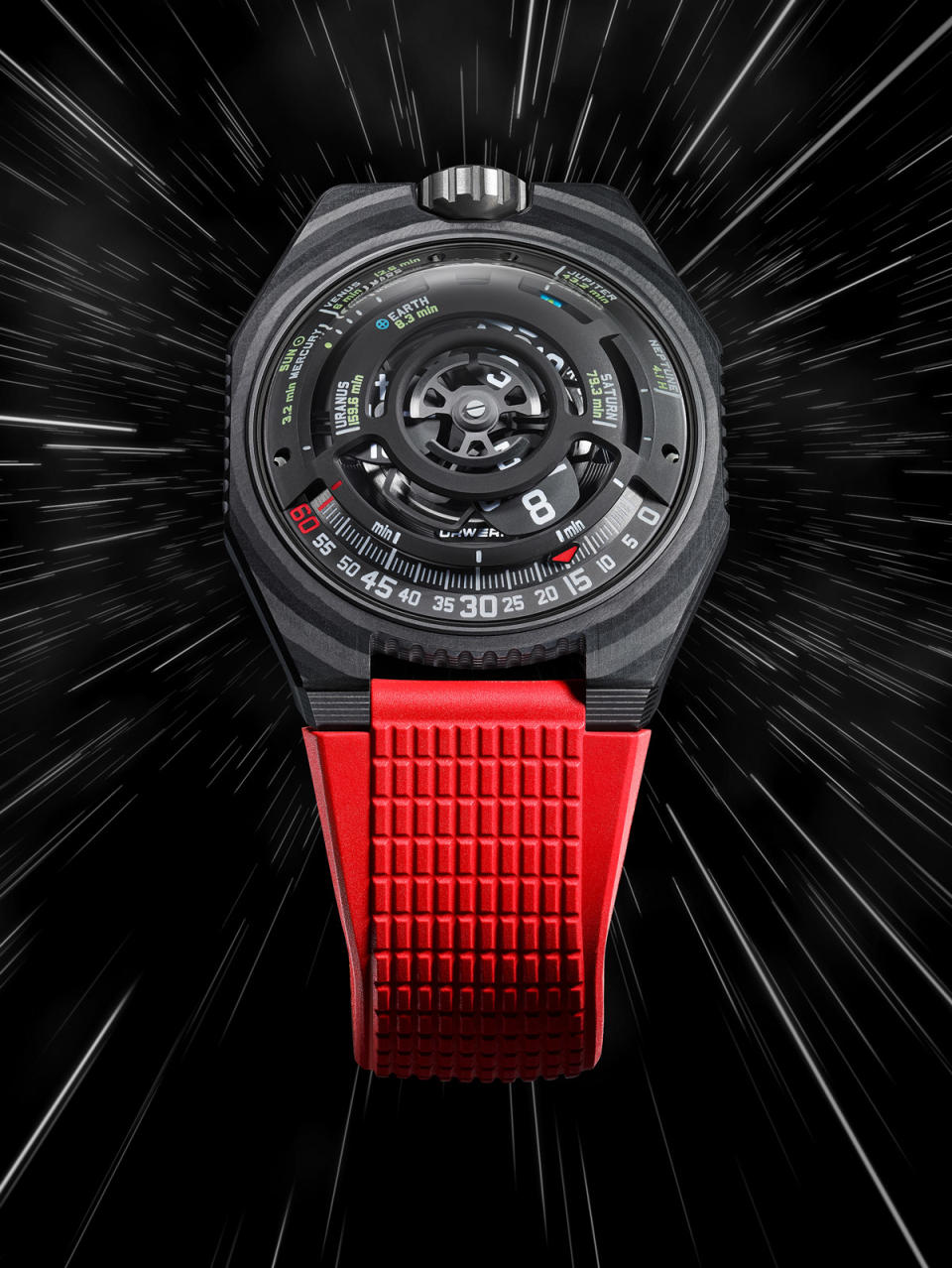Urwerk’s New, Otherworldly ‘LightSpeed’ Watch Has Its Own Planetarium

Few watchmaking firms offer as inventive a take on timekeeping as Urwerk, the brainchild of master watchmaker Felix Baumgartner and his co-founder and artistic director, Martin Frei. Since 1997, this small Swiss maison has operated at the bleeding edge of haute horlogerie, fashioning futuristic timepieces with innovative functionality and aesthetics that scream Star Wars more than Schaffhausen.
The brand’s UR-100 series is emblematic of its creative spirit—based upon the “wandering hours” complication, it makes use of a series of three rotating satellite arms that display the current hour against a curved aperture at the bottom of the watch dial. Developed in the 17th century, the wandering hours display was originally used in clocks. It came to wristwatches via Audemars Piguet in its Starwheel collection in the early 1990s. Urwerk’s many takes on the wandering hours complication have yielded numerous compelling timepieces, though the UR-100 series—with its funky case and peripheral indications—is particularly wild, with several unique models based upon inventive themes rarely explored in contemporary watchmaking.
More from Robb Report
Zenith Just Dropped a Chronomaster Sport Watch in Lightweight Titanium
Chanel Just Opened Its First N.Y.C. Watch and Jewelry Store. Here's a Look Inside.
Piaget's New All-Gold Polo Watch Hails From 1979, but It's Pure '80s Magic

The UR-100V “Lightspeed,” Urwerk’s latest entry in the series, is based upon the concept of light, and the time it takes to reach each planet in our solar system. Light, which travels at 299,792,458 km/s and is indicated mathematically by the letter “c,” forms the basis for systems both mathematical—i.e. Einstein’s theory of relativity—and (thus far) fictional, such as the concept of hyperspace travel of Star Trek and Star Wars fame. In seeking to represent the speed of light on a wristwatch, Baumgartner and Frei built a small “planetarium” on the upper half of the UR-100V that displays each planet, along with the time it takes light to travel from the sun to said planet.

Particularly useful? Perhaps not. Poetic? Certainly. When combined with the watch’s wandering hours display, the results look distinctly like something that would’ve been worn on Commander Spock’s wrist when he took on a Klingon (or two). Powering the watch is Urwerk’s automatic UR 12.02 movement—a unit whose use of advanced materials and multiple finishes speaks to Urwerk’s command of the unconventional. With aluminum satellite hours set on beryllium-bronze Geneva crosses; an aluminum carousel; three baseplates formed from non-magnetic ARCAP alloys; a titanium inner housing; and a sun-inspired automatic winding rotor visible via a sapphire display caseback, it’s a caliber that only a bunch of mad horological scientists could have envisaged. (Thankfully, all this results in a time-telling display that, while unorthodox, is easy to read.)

Housed in a 43 mm black carbon case with a sandblasted caseback in DLC-treated Grade 5 titanium, the UR-100V measures 14.55 mm thick—not small by any means, but its red textured rubber strap with folding clasp should certainly serve to lighten the load and make for a comfortable wearing experience. Retailing for 65,000 CHF (approximately $74,290), it’s a timepiece for someone who’s experienced just about everything else the market has to offer—and has come up wanting.
Best of Robb Report
Sign up for Robb Report's Newsletter. For the latest news, follow us on Facebook, Twitter, and Instagram.
